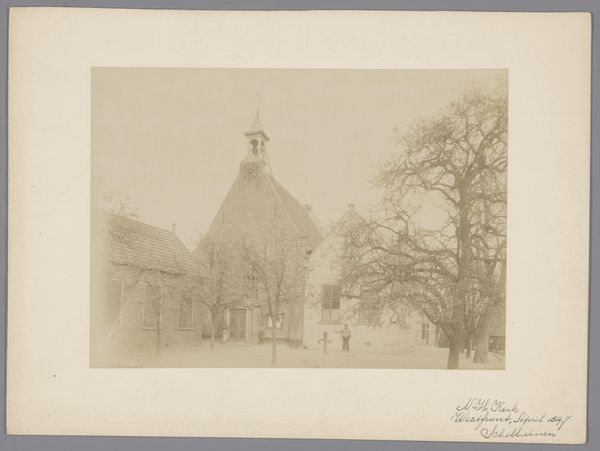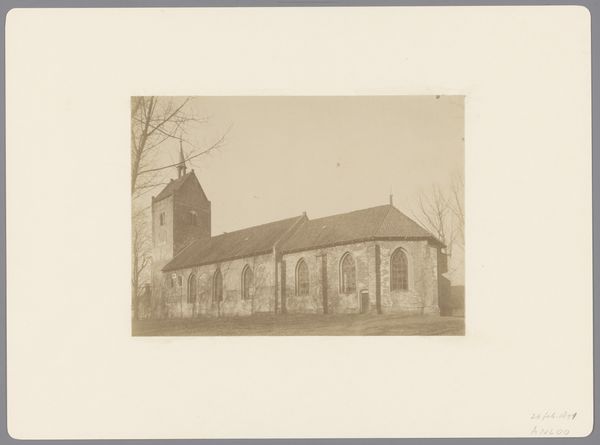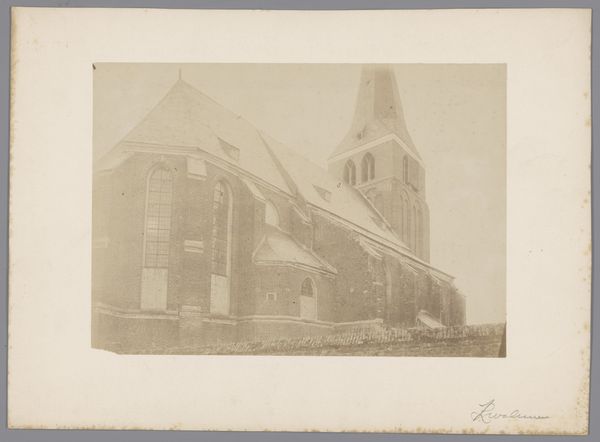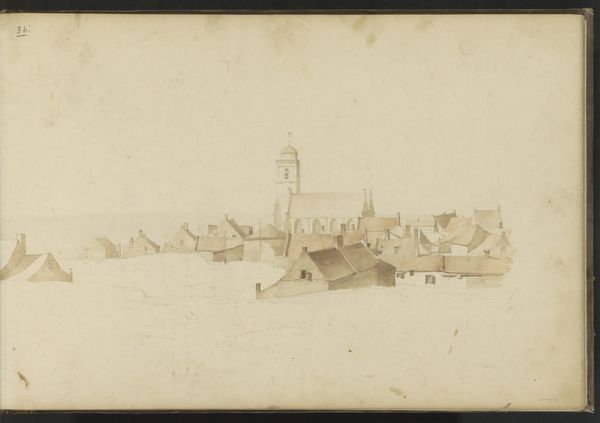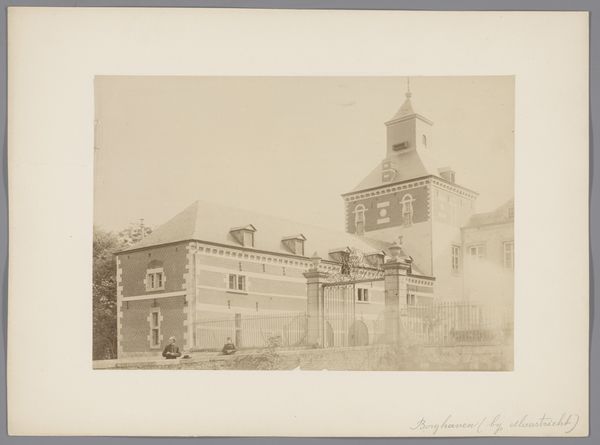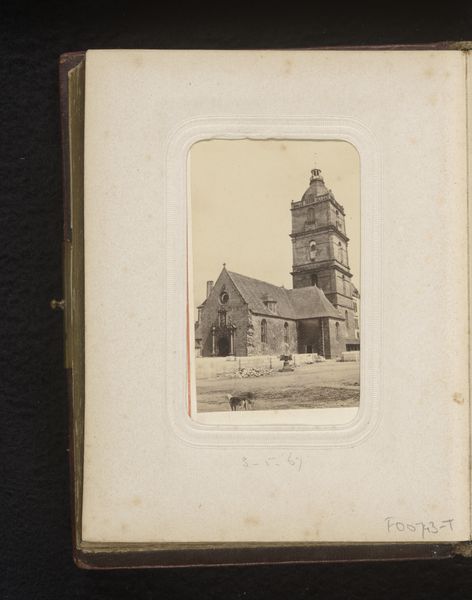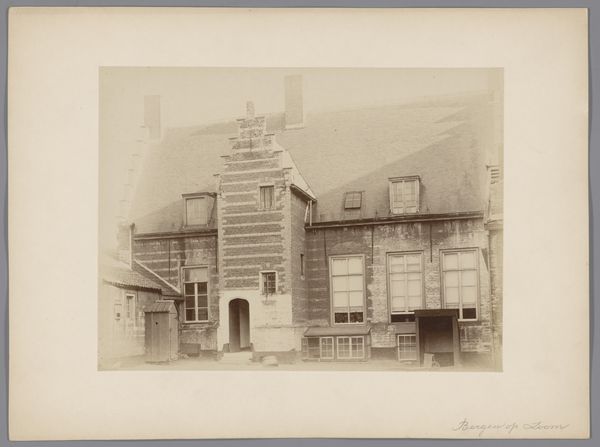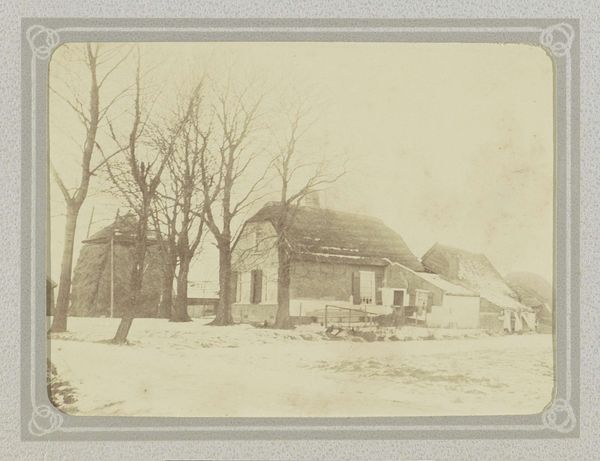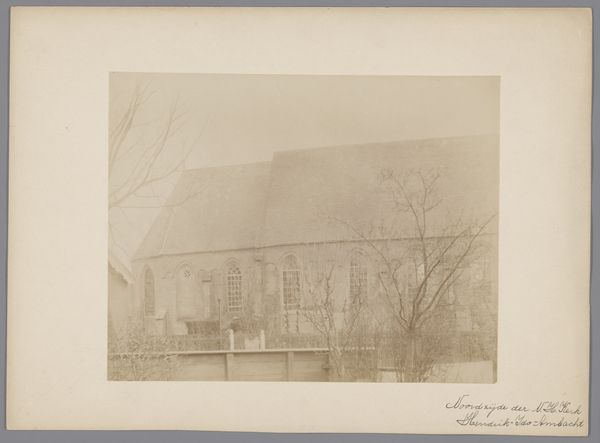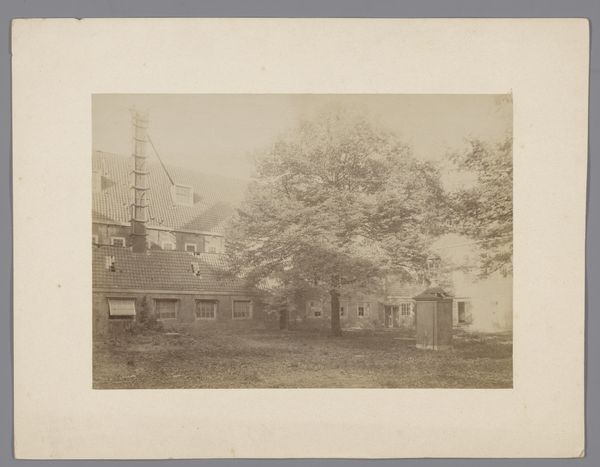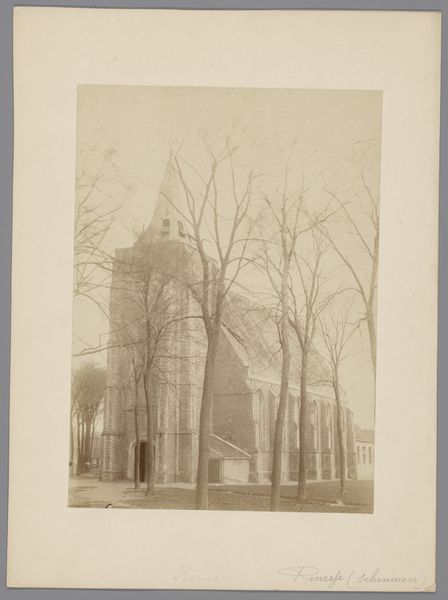![[Prison, Capuchin Convent] by François Aubert](/_next/image?url=https%3A%2F%2Fd2w8kbdekdi1gv.cloudfront.net%2FeyJidWNrZXQiOiAiYXJ0ZXJhLWltYWdlcy1idWNrZXQiLCAia2V5IjogImFydHdvcmtzLzY0NDgzMDJmLWE5NTItNGFiYy04MmVjLWEzYzkyYWJhNDRiNi82NDQ4MzAyZi1hOTUyLTRhYmMtODJlYy1hM2M5MmFiYTQ0YjZfZnVsbC5qcGciLCAiZWRpdHMiOiB7InJlc2l6ZSI6IHsid2lkdGgiOiAxOTIwLCAiaGVpZ2h0IjogMTkyMCwgImZpdCI6ICJpbnNpZGUifX19&w=3840&q=75)
print, photography, architecture
#
16_19th-century
# print
#
landscape
#
photography
#
cityscape
#
architecture
Dimensions: Image: 11.3 × 14.2 cm (4 7/16 × 5 9/16 in.) Mount: 18.2 × 22 cm (7 3/16 × 8 11/16 in.)
Copyright: Public Domain
Curator: This photograph, taken around 1867 by François Aubert, captures the stark reality of "[Prison, Capuchin Convent]." It's currently housed at the Metropolitan Museum of Art. The ruins suggest a location with ties to architectural legacies in landscapes. Editor: It’s bleak. The desaturated tones emphasize the distressed architecture, almost swallowed by the surrounding decay. There’s a real sense of abandonment in the scene's emptiness, highlighting only its physicality. Curator: Aubert’s photograph becomes a document of institutional failure. We see the architecture not as a spiritual haven but as a space of confinement, marked by what I think is damage from conflict. Who inhabited the space, and to what ends? It challenges us to consider prisons as instruments of power, and the social and political implications of incarceration, thinking, of course, about gendered, racialized aspects. Editor: Looking at the image from the viewpoint of its construction, the sepia tone speaks to photography's material evolution and its social function, namely to freeze time and inform memory. The image itself is mounted, so considering Aubert’s processes in creating these photographic prints highlights his artistic choices, as well as how a ruin is actively, physically, preserved for future viewing. Curator: The foreground really reinforces that material presence. This photographic evidence resonates even more strongly with contemporary discussions on state-sponsored violence and societal accountability for its after-effects. Considering where and when it was captured, this site might relate directly to class or political persecution, furthering my belief about violence. Editor: Yes, seeing the building materials disintegrate really hits on your earlier thought around violence! You made me reconsider my earlier impression as solely aesthetic—materiality and the labor involved show the passage of time, and this really brings this reading to life, as it highlights how conflict impacts architecture and landscapes through tangible degradation. Curator: Absolutely. Aubert’s photograph prompts critical analysis beyond the visual documentation; we have a unique chance to dissect social orders through spatial deconstruction. I would hope others visiting this work have this opportunity to understand the context further! Editor: And in examining the material, we witness the convergence of decline and labor. In this combination, it transforms the viewer's experience, compelling all who engage with the art to reflect on how the processes and building materials influence collective memory and societal understanding.
Comments
No comments
Be the first to comment and join the conversation on the ultimate creative platform.
